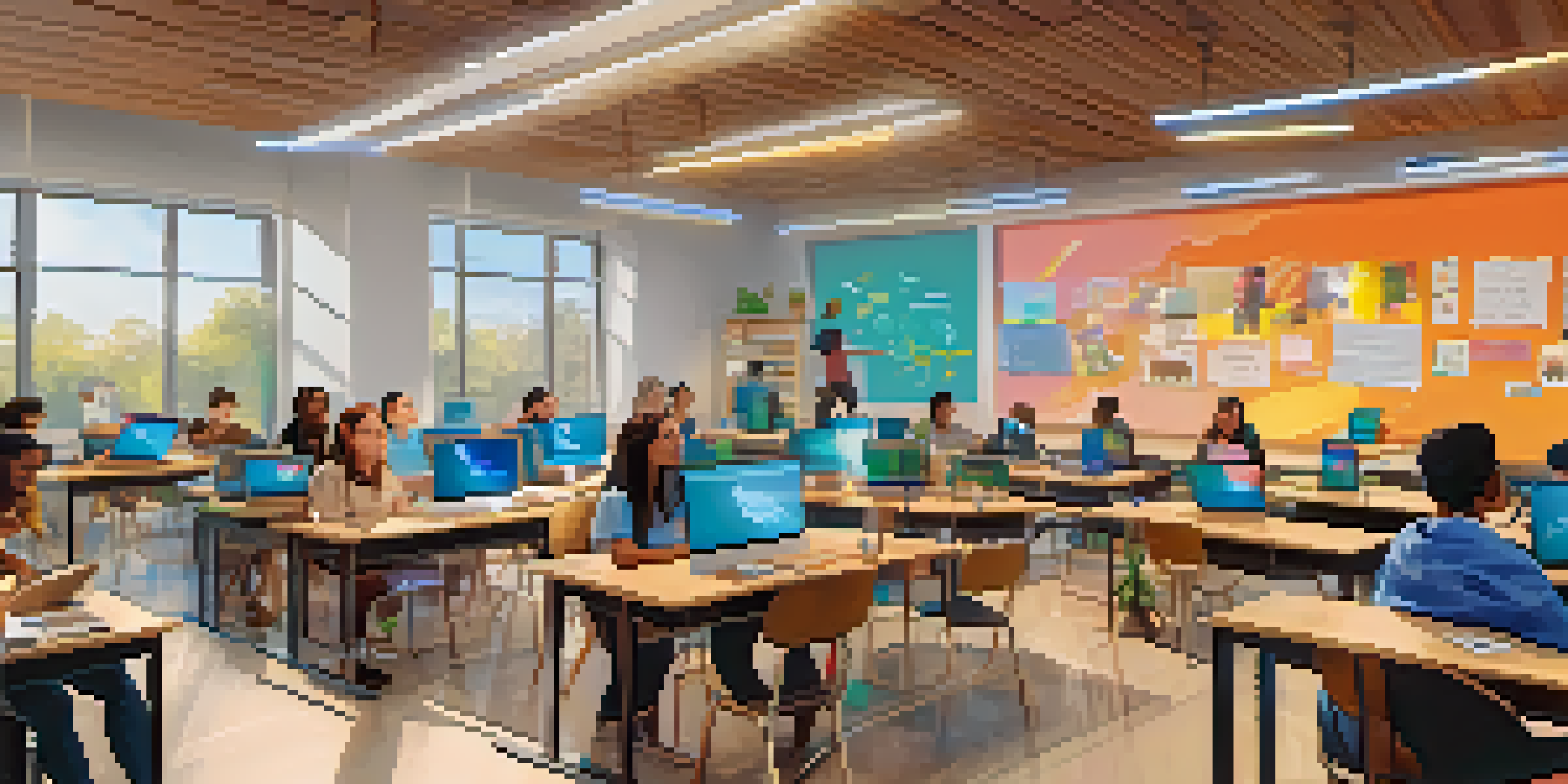Creating Effective Synchronous Learning Experiences Online

Understanding Synchronous Learning and Its Benefits
Synchronous learning refers to real-time online learning where participants engage simultaneously. This format fosters immediate interaction, allowing students to ask questions and receive instant feedback, creating a dynamic learning environment. Think of it as attending a live concert versus listening to a recorded album; the energy and connection are palpable during live performances.
Learning is not the product of teaching. Learning is the product of the activity of learners.
One key advantage of synchronous learning is the sense of community it builds among learners. When students interact in real-time, they share experiences and collaborate, which enhances their understanding of the material. This camaraderie can lead to deeper discussions and more engaging learning experiences.
Additionally, synchronous learning can improve accountability as students must attend sessions at scheduled times. This structure encourages participation and reduces the likelihood of procrastination, making it easier for learners to stay on track with their studies.
Choosing the Right Technology for Online Learning
Selecting the right technology is crucial for effective synchronous learning experiences. Platforms like Zoom, Microsoft Teams, and Google Meet offer various features such as breakout rooms and screen sharing. These tools can enhance interaction and collaboration, making sessions more engaging for participants.

It's also important to consider the user experience when choosing a platform. A user-friendly interface can reduce technical difficulties, allowing both instructors and students to focus on learning rather than troubleshooting. Think about the last time you struggled with a complicated app; a simple and intuitive platform makes all the difference.
Benefits of Synchronous Learning
Synchronous learning fosters real-time interaction, building a sense of community and accountability among learners.
Finally, ensure that your chosen technology supports accessibility for all learners. Features like closed captions and screen reader compatibility help create an inclusive environment, ensuring everyone can participate fully in the learning experience.
Designing Engaging Course Content for Live Sessions
Creating engaging course content is essential for capturing learners' attention during synchronous sessions. Use a mix of multimedia, including videos, slides, and interactive polls, to keep participants interested. This variety helps cater to different learning styles and makes the material more relatable.
The only real mistake is the one from which we learn nothing.
Another effective strategy is to incorporate real-world examples and case studies into your presentations. Sharing anecdotes or stories related to the topic can make the content more memorable and encourage students to draw connections to their own experiences. It's like seasoning a dish; the right touch can elevate the entire experience.
Lastly, don't forget to include opportunities for interaction throughout your sessions. Encourage questions, discussions, and group activities to maintain a lively atmosphere. Engaging learners in this way can lead to richer conversations and a more collaborative learning experience.
Establishing Clear Learning Objectives
Setting clear learning objectives is a foundational step in creating effective online experiences. These objectives guide both instructors and students, providing a roadmap for what to achieve during each session. When students know what to expect, they are more likely to engage actively in the learning process.
Be specific about what you want learners to accomplish. Instead of vague goals like 'understand the topic,' frame your objectives in measurable terms, such as 'describe the key concepts of the topic.' This clarity helps students focus their efforts and assess their progress throughout the course.
Choosing Effective Learning Tech
Selecting user-friendly technology enhances engagement and ensures accessibility, making online learning smoother for everyone.
Additionally, sharing these objectives at the beginning of each session can help reinforce their importance. When students see how each lesson ties back to the overall goals, they’re more likely to stay motivated and engaged.
Creating a Supportive Learning Environment
A supportive learning environment is crucial for encouraging student participation. Start by fostering a safe space where learners feel comfortable sharing their thoughts and questions. This can be achieved through simple practices like setting ground rules for respectful communication and encouraging active listening.
Incorporate icebreakers or team-building activities at the start of your sessions to help establish rapport among participants. These activities can lighten the mood and make students feel more connected, like a warm-up before a big game. When learners know each other, they are more likely to contribute and collaborate effectively.
Regularly check in with your students to gauge their comfort levels and address any concerns they may have. This ongoing support demonstrates that you value their well-being, which can enhance their overall learning experience.
Utilizing Breakout Rooms for Collaboration
Breakout rooms are a powerful tool for enhancing collaboration during synchronous learning sessions. By dividing participants into smaller groups, you create an opportunity for deeper discussions and more personalized interactions. This setup allows students to share ideas freely and learn from each other in a less intimidating environment.
It's important to provide clear instructions and objectives for breakout sessions to keep discussions focused and productive. Consider assigning specific roles or tasks to each group member, ensuring that everyone contributes to the conversation. This structure mimics team projects in the workplace, where collaboration is key to success.
Creating Engaging Course Content
Incorporating multimedia and interactive elements in course design captures attention and encourages active participation.
After the breakout sessions, reconvene as a larger group to share insights and findings. This debriefing reinforces learning and allows students to benefit from each group's perspectives, leading to a richer overall experience.
Gathering Feedback for Continuous Improvement
Feedback is an invaluable component of any learning experience, especially in a synchronous online setting. Regularly soliciting input from students helps you identify areas for improvement and adjust your teaching methods accordingly. Think of it as a navigation system; without feedback, you might veer off course.
Consider using anonymous surveys or polls to gather honest feedback on various aspects of your sessions, such as content clarity, pacing, and engagement levels. This information can guide you in refining your approach and enhancing the overall learning experience for future participants.

Additionally, create an open dialogue where students feel comfortable sharing their thoughts during sessions. This two-way communication not only fosters a sense of community but also empowers learners to take an active role in shaping their education.